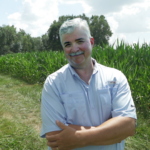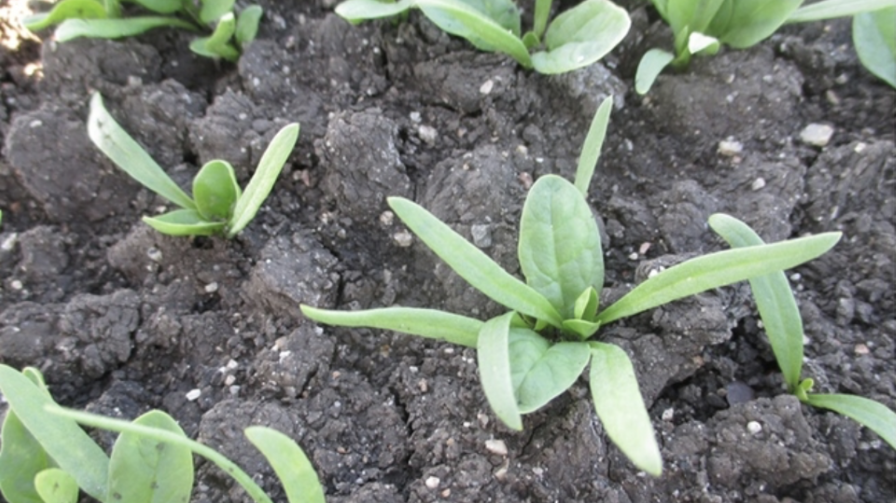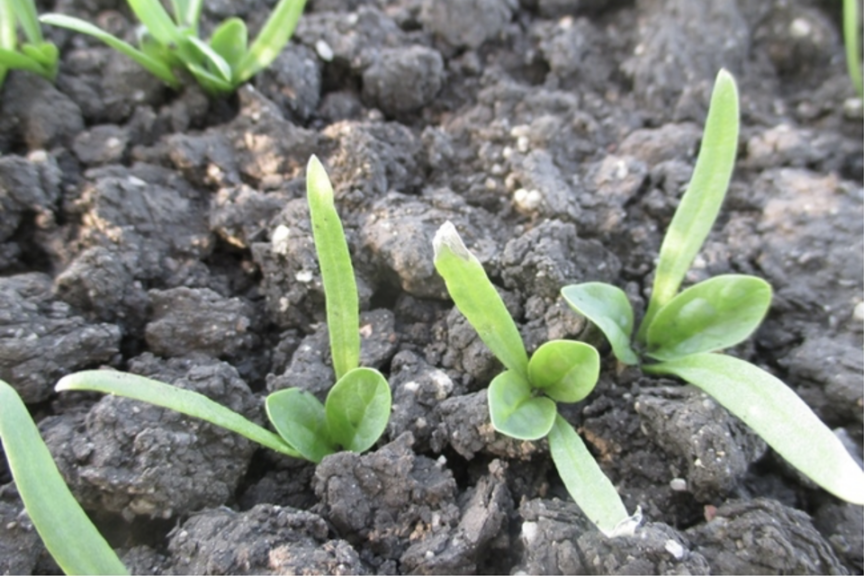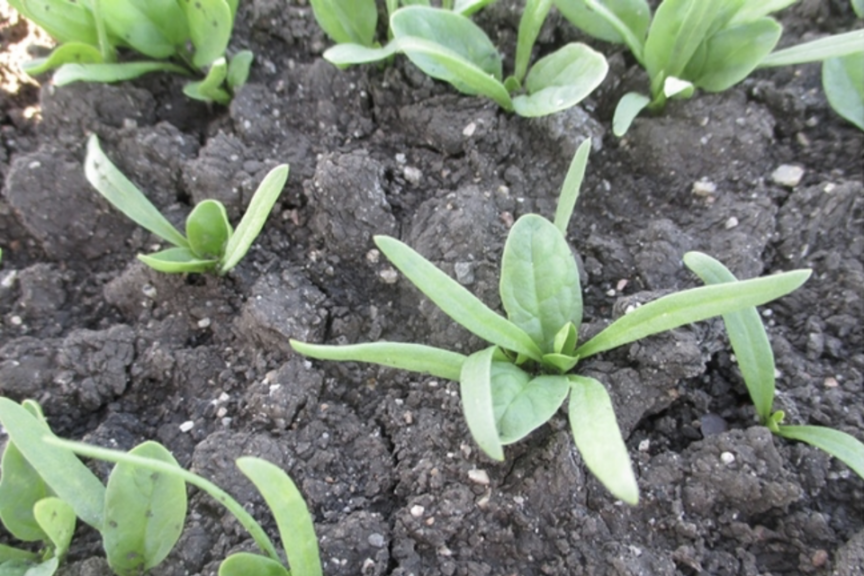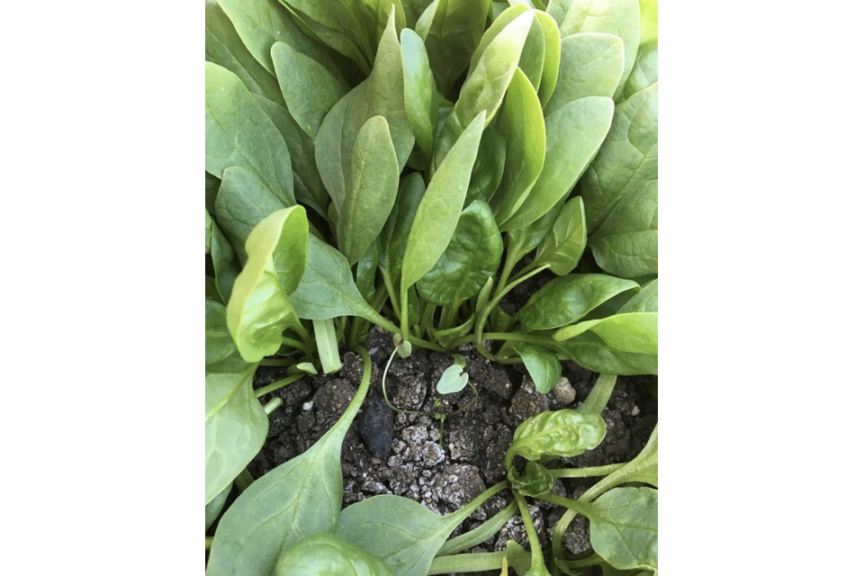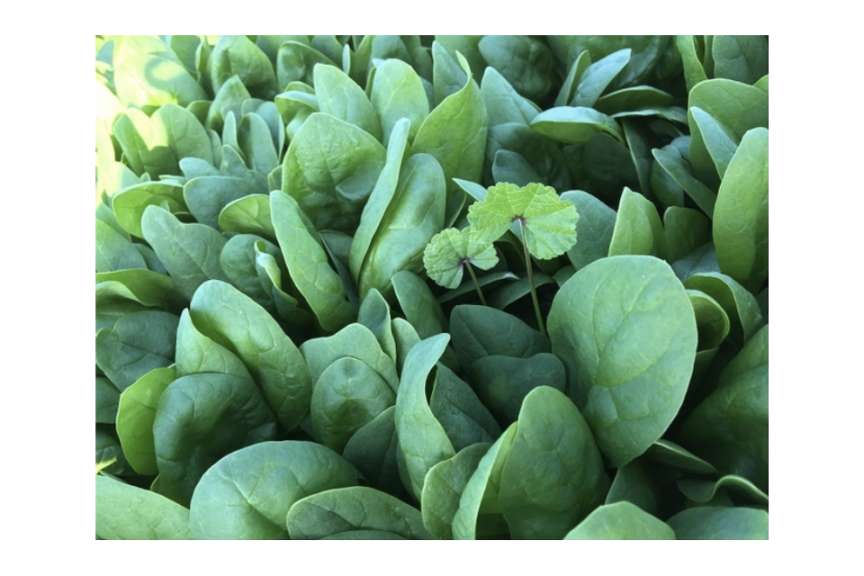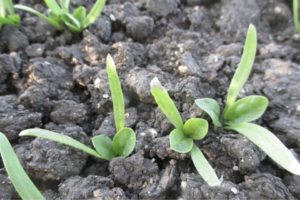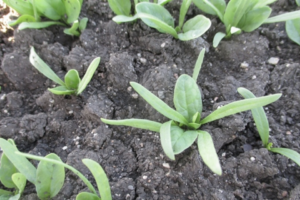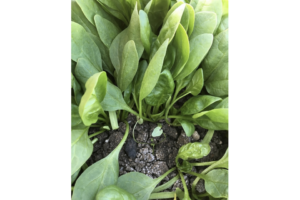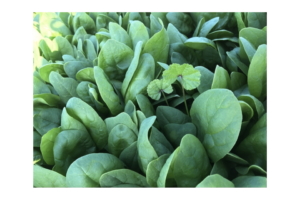For Spinach, Weed Control Timing Is Everything
Spinach is a widely consumed and versatile crop that is as much about its look as it is about its flavor. For growers, however, a successful spinach harvest is as much about patience as it is about timing.
It’s grown on both coasts of the U.S., with varying crop cycles corresponding to varying climates. On the East Coast, there are two main plantings with seeds sown over a protracted growing season of 8-10 months. While on the West Coast, a more temperate climate, spinach is planted continuously throughout the year. With a wide variety of growing strategies employed in different climates and the photosensitivity of the spinach plant, growers are challenged by the lack of herbicides on the market, especially those applicable after planting.
Options for Spinach Growers
We recently sat down with Dr. Steve Fennimore, Extension Specialist at University of California, Davis’ Department of Plant Sciences, to discuss his studies on a broadleaf weed management solution specifically tailored for use in spinach. He confirmed the lack of post-emergence control products, and the challenges growers face, especially in shorter crop cycle markets, such as California and Arizona.
“Hypothetically, if we use a pre-emergence solution like Cycloate that suppresses the weeds for a little while on its own it may buy you time, but that time is a chance to actually utilize additional treatments of a post-emergence product,” Dr. Fennimore noted. “Most post-emergence herbicides need time to be safely applied to larger plants. When your crop is spinach, fewer weeds means fewer hours of hand weeding per acre thus saving you both time and money. Therein lies the challenge growers have felt for decades.”
Traditionally, fresh market spinach has only had one primary herbicide, cycloate. Cycloate, as described above, does not control all weeds. As can be seen in the evaluation of phenmedipham applications published by Dr. Fennimore himself, he states: “Previous studies demonstrated that cycloate PRE followed by (fb) phenmedipham at the four-leaf spinach stage is a safe and effective treatment. However, this treatment is not useful for the main growing season of fresh spinach due to its short crop cycle and the 21-day pre-harvest interval requirement.”
But there is some good news. Dr. Fennimore relayed the success he’s personally seen through his research in the spinach fields, specifically detailing observations of Phenmedipham when applied to early stage spinach in California. He explained a few underlying factors for its effectiveness, as well as some best practices growers can use to cut back on the costs associated with manual weed management. “We are seeing real positive results with Phenmedipham and have been able to meet the 21-day PHI. The key is the flexibility to modify rates and program applications to achieve success, whereas others are still only offering strict 50 days with S-metolachlor. For instance Phenmedipham – when used earlier in the shorter crop cycle markets at a modified rate, growers can still comfortably meet the required PHI.”
Timing is Everything
With spinach, the plant needs to be protected because the biomass of the leaves is important, and weeds need to be controlled in a cost-effective way. Dr. Fennimore shares “Hand weeding is extremely expensive…bearing in mind the speed at which spinach grows and the fact that we can’t risk cosmetic damage – it is much better to employ a two-stage approach. Use the Cycloate to suppress the weeds, then come in and use the Phenmedipham 7-10 days later – which, for West Coast Growers, will help you achieve the golden ticket 21-day [PHI] number.”
Dr. Fennimore’s evaluations illustrate that if you apply Phenmedipham post-planting, you can reduce weed density by up to 87%, with optimal results achieved when the product is applied at night.
“It is because the spinach itself can process the post-emergent herbicide at night without burning the plant,” he explains.
Dr. Fennimore went on to recommend applying the Phenmedipham at the two-leaf stage when you are mechanically harvesting the spinach.
Typically, machines don’t take the first two leaves, which are generally the ones that could be susceptible to minor cosmetic damage, so this herbicide won’t negatively affect the marketable yield. We have proven that the product is safe to use with no effects on the spinach from the two-leaf stage,” Dr. Fennimore says.

Less phytotoxicity observed from evening than morning applications (Table 1)
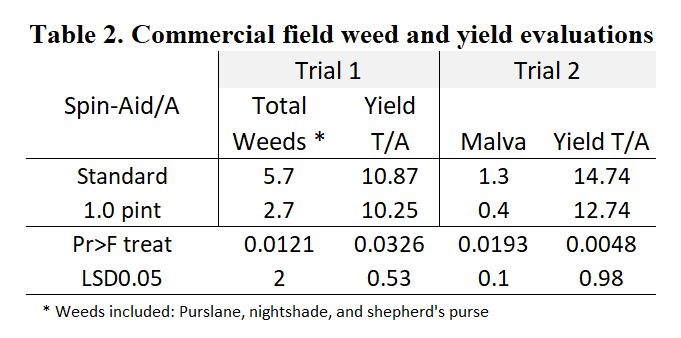
At one site Spin-Aid reduced the number of purslane, shepherd’s purse and hairy nightshade by half, but application timing is important to avoid yield reduction (Table 2
What About Back East?
East Coast growers have been seeing similar success using Phenmedipham for post-emergence control. Since they have longer growing seasons – typically 55 to 70 days from seeding to harvest depending on the season, they also may experience increased weed pressure, as the weeds have more time to grow or even re-emerge. These growers know that Phenmedipham is even more effective at clearing the fields with higher rates of application, especially when applied to more mature plantings.
Byron DuBois of Springbrook Farms in Pittsgrove, New Jersey, uses a Phenmedipham-based herbicide on all of his 500 acres of processed spinach. He commented, “If weeds get out of control, we need to hire a hand weed crew, which is costly and difficult to find. As soon as I see weeds emerging, I do my first application of Phenmedipham.” Byron then follows up in 7-10 days with a second application, also applied in the evening, to make sure he gets any additional weeds that emerge. “After that,” he says, “the plant canopy is wide enough to fight off any other [weeds] that might appear.”
When reflecting on this beloved leafy green, spinach growers are keenly aware that time is of the essence. Whether deciding when and how to control weeds, using herbicides to halt the reemergence of such weeds or even what time of day (or night) to apply such herbicides, they are committed to finding the best way to maximize quality and yield.
At the end of the day, good weed management in spinach really is all about timing.
Tom Wood is General Manager at Belchim Crop Protection USA.




